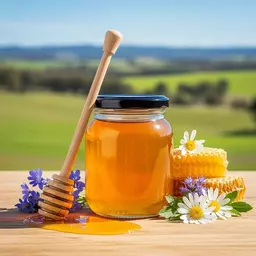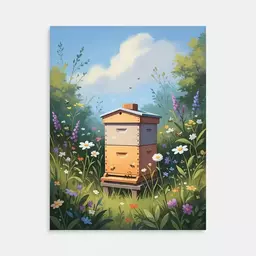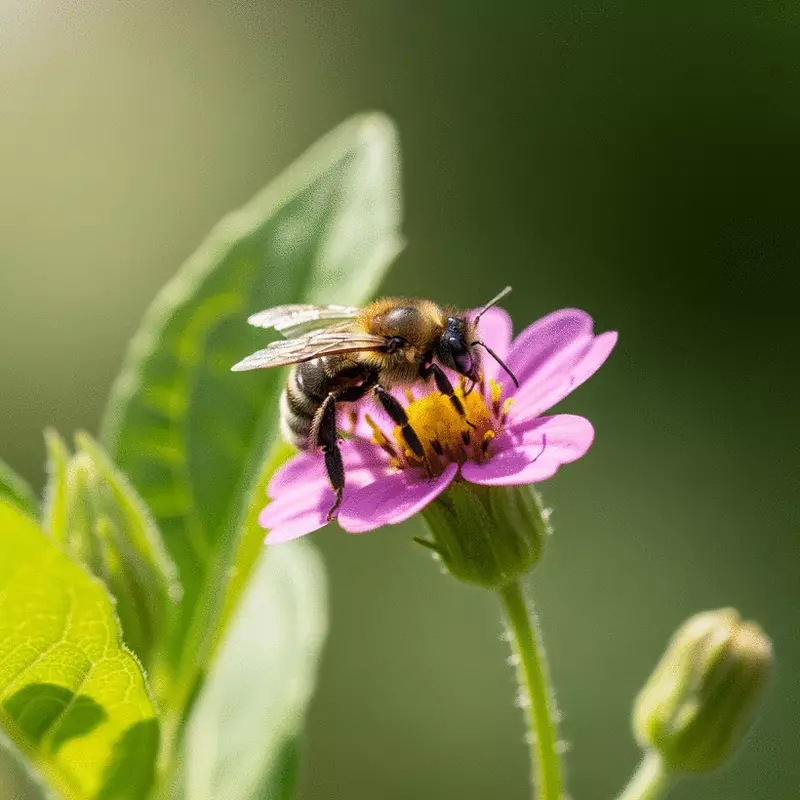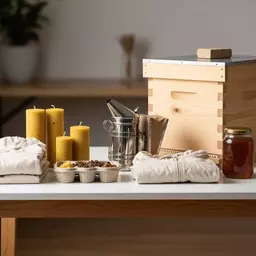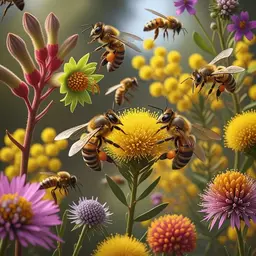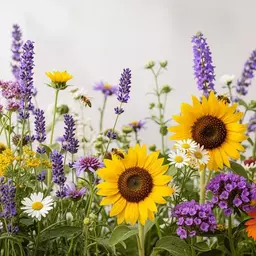Setting Up a Sustainable Apiary
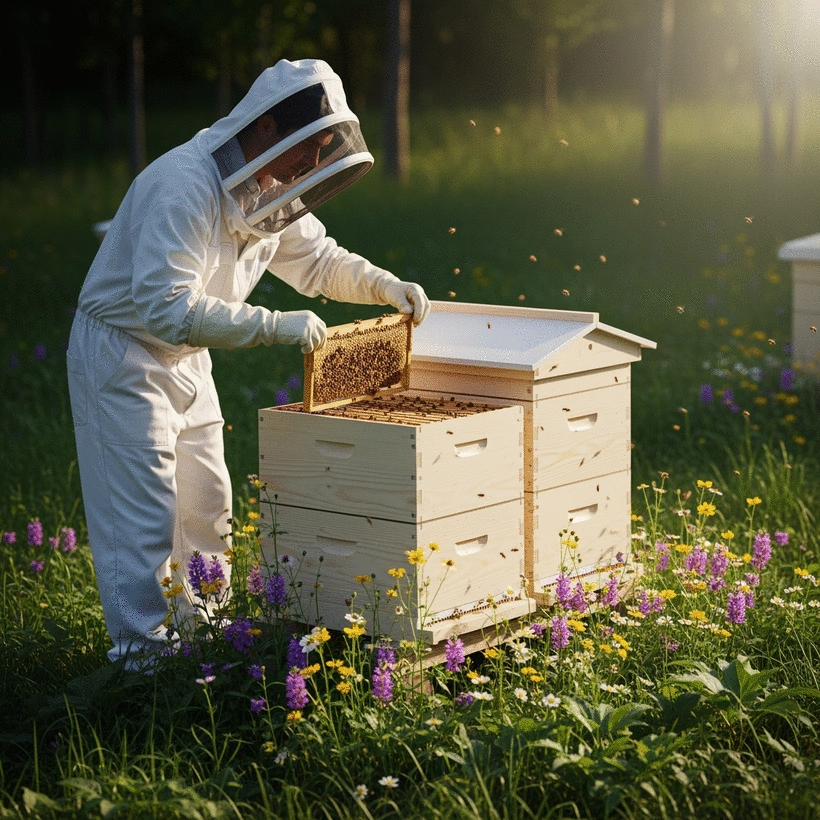
As you embark on your beekeeping journey, consider this: sustainable practices are not just beneficial—they're essential for the thriving future of our ecosystems. Let's explore the key insights that can guide both novice and experienced beekeepers on this rewarding path.
What You Will Learn
- The significance of sustainable beekeeping practices to maintain a healthy balance between bees and their environment.
- Key differences between commercial and hobbyist apiaries, helping you choose the right setup for your goals.
- The importance of planting native flora to provide natural food sources for bees and promote biodiversity.
- Strategies for effective hive management to ensure bee health and productivity as you scale your apiary.
Apiary Setup Considerations: Sustainability vs. Scalability
Setting up an apiary involves key decisions that balance environmental health with growth potential. Below is an overview of sustainable practices and the distinctions between hobbyist and commercial apiaries. For a deeper dive into initial considerations, explore our guide on designing your first apiary layout.
Sustainable Beekeeping Practices
- ✓Organic Pest Control
- ✓Promoting Biodiversity (Native Flora)
- ✓Holistic Hive Management for Health
- ✓Utilize Native Plants
- ✓Regular Bee Health Monitoring
Apiary Types & Goals
Hobbyist Apiaries
Smaller scale, personal enjoyment, sustainability focus. Flexible experimentation.
Commercial Apiaries
Large-scale production, strict management, significant investment. Profit-oriented.
Blended Approach
Combines aspects of both for flexibility and balanced goals.
Common Hive Types
Langstroth Hives
Most common, modular design, adaptable.
Top-Bar Hives
Natural beekeeping, less intrusive management.
Warre Hives
Mimic natural tree hollows, focus on bee well-being.
Key Bee Species for Beekeeping
Apis Mellifera
Western honey bee, common, productive, adaptable.
Carniolan Bees
Good foragers, gentle, adaptable to cold climates.
Italian Bees
Prolific layers, good honey producers, gentle temperament.
Understanding the Basics of Apiary Setup for Sustainability and Scalability
As a passionate apiarist, I've learned that setting up an apiary doesn’t just involve placing some hives in your backyard—it’s about crafting a sustainable environment that promotes bee health and ensures the long-term success of your beekeeping journey. At Nectar Network, we believe that understanding the basics is crucial for both sustainability and scalability in your beekeeping practices.
In this section, we'll dive into sustainable beekeeping practices, explore various apiary types, and help you choose the right setup for your needs. Let's buzz into these essential topics!
Defining Sustainable Beekeeping Practices
Sustainable beekeeping is all about maintaining a healthy balance between our bees and their environment. This means understanding and implementing practices that do not harm the bees or their habitat. When I first started my journey, I quickly realized that sustainability in beekeeping is not just a trend; it's a necessity for the future of our ecosystems.
- Using organic methods for pest control
- Promoting biodiversity by planting native flora
- Implementing hive management practices that support bee health
By emphasizing these practices, we can help ensure that our bees thrive in their environments, ultimately benefiting our agriculture and natural ecosystems.

What Does Sustainability Mean in Beekeeping?
Sustainability in beekeeping means adopting methods that nurture bee populations while also supporting their habitat. This encompasses everything from the types of hives we use to how we manage pests and diseases. To truly be sustainable, we must consider the holistic health of our bees and the environment they inhabit.
As you embark on your beekeeping journey, think about how your practices can contribute to a healthier ecosystem. For instance, exploring natural pest controls not only protects your hives but also reduces chemical runoff that can adversely affect local wildlife! For more details on maintaining healthy hives, check out our article on sustainable beekeeping for healthy hives.
The Importance of Pollinators and Ecosystem Health
Pollinators like honey bees play a crucial role in our food systems and the health of our ecosystems. Did you know that these remarkable insects are responsible for pollinating about one-third of the food we consume? Without them, our diets would look drastically different, and many plant species would struggle to survive.
By fostering a community of knowledgeable beekeepers at Nectar Network, we aim to raise awareness about the importance of pollinators and encourage everyone to take action—whether that's planting pollinator-friendly gardens or simply sharing information about bee conservation!
A Comprehensive Overview of Apiary Types
When setting up your apiary, it's essential to choose the type that best suits your goals and lifestyle. There are distinct differences between commercial and hobbyist apiaries, and understanding these can help you make informed decisions.
- Hobbyist apiaries are typically smaller and focus on personal enjoyment and sustainability.
- Commercial apiaries often require more resources and a larger commitment, but they can also lead to significant production.
- Some beekeepers blend both approaches, allowing for flexibility in their practices.
Deciding on the right apiary type will set the stage for your beekeeping experience, so take the time to reflect on your aspirations and the commitment you're willing to make!
Commercial vs. Hobbyist Apiaries: Key Differences
Understanding the differences between commercial and hobbyist apiaries is important in ensuring you make the right choice for your beekeeping journey. Commercial apiaries often focus on large-scale honey production, requiring strict management practices and a significant investment in equipment.
On the other hand, hobbyist apiaries can be more flexible, allowing for experimentation and creativity. It's not uncommon for hobbyists to prioritize bee health and environmental impact over profit, which aligns closely with the mission of Nectar Network.
Choosing the Right Type of Hive for Your Needs
Selecting the right hive is another essential aspect of setting up your apiary. You'll encounter various hive styles, each with its pros and cons. Here are a few popular options:
- Langstroth hives: The most common type, known for its modular design.
- Top-bar hives: Great for natural beekeeping enthusiasts.
- Warre hives: Ideal for those who want to mimic natural bee habitats.
Choosing the right hive type will greatly influence your beekeeping experience, so consider your goals, preferences, and the local conditions when making your selection!

Exploring Different Bee Species for Your Apiary
Not all bees are created equal! When starting an apiary, it's essential to consider which species of bees will thrive best in your environment. The most common species for beekeeping is the Apis mellifera, or the Western honey bee, known for its productivity and adaptability.
However, there are other species worth exploring, such as the Carniolan bees and Italian bees—both renowned for their unique characteristics. By understanding the traits of different bee species, you can make an informed decision that aligns with your beekeeping goals. For beginners, a good starting point is our beginner's guide to honey bees.
Pro Tip
Did you know? Incorporating native plants into your apiary design not only provides essential food sources for your bees but also helps create a balanced ecosystem. Plants such as milkweed and sunflowers are particularly beneficial, attracting a variety of pollinators while supporting local biodiversity. Consider planting these alongside your hives for optimal bee health!
Frequently Asked Questions (FAQs)
What is sustainable beekeeping?
Sustainable beekeeping involves practices that maintain a healthy balance between bees and their environment, focusing on organic pest control, promoting biodiversity with native flora, and implementing hive management practices that support bee health for the long term.
What are the main differences between commercial and hobbyist apiaries?
Hobbyist apiaries are typically smaller, focused on personal enjoyment and sustainability, allowing for flexibility and experimentation. Commercial apiaries are larger scale, production-oriented, requiring strict management and significant investment, often prioritizing profit.
What are the common types of beehives?
Common hive types include Langstroth hives (modular and adaptable), Top-bar hives (suited for natural beekeeping with less intrusive management), and Warre hives (designed to mimic natural tree hollows, focusing on bee well-being).
Which bee species are recommended for beekeeping?
The most common species is Apis mellifera (Western honey bee) due to its productivity and adaptability. Other recommended species include Carniolan bees (good foragers, gentle, adaptable to cold climates) and Italian bees (prolific layers, good honey producers, gentle temperament).
Why is it important to plant native flora around an apiary?
Planting native flora provides essential natural food sources for bees, promotes biodiversity, and helps create a balanced ecosystem. This practice supports bee health and contributes to the overall ecological balance.
Recap of Key Insights on Apiary Setup and Management
As we wrap up our exploration of apiary setup and management, let’s take a moment to highlight some of the key insights that can guide both novice and experienced beekeepers alike. Establishing a successful apiary isn't just about having the right equipment; it involves a comprehensive understanding of sustainable practices, colony health, and community engagement. By prioritizing these elements, we can ensure our bees thrive and contribute positively to our ecosystems.
Reflecting on our journey, here are a few critical sustainable practices that every beekeeper should embrace:
- Utilizing native plants to provide natural food sources for bees.
- Implementing organic pest control methods to maintain hive health.
- Monitoring bee health regularly to prevent diseases before they escalate.
- Engaging with local beekeeping communities for shared knowledge and support.
By adopting these practices, you're not only supporting your hives but also contributing to the broader ecological balance in your area. Remember, every small step counts in making a significant impact!
The Path to Successful Scaling: What to Expect as You Grow
Transitioning from a hobbyist to a commercial beekeeper can be an exhilarating yet daunting journey. As I embarked on my own path, I realized that understanding what to expect during this process is crucial for sustainable growth. It’s essential to keep an eye on the big picture while managing the day-to-day operations of your apiary.
Here are some important factors to consider as you scale your apiary:
- Identify growth opportunities by assessing local market demands for honey and other bee products.
- Develop a solid financial plan that considers initial investments and potential returns on your beekeeping endeavor.
- Focus on best practices for hive management, especially during periods of expansion.
- Be prepared for seasonal challenges and adjust your management techniques accordingly.
As you navigate this journey, keep in mind that patience and perseverance are key to enduring success. Connecting with fellow beekeepers, like those at Nectar Network, can provide invaluable insights and support as you scale up your operations!
Next Steps for Aspiring Beekeepers
Getting Involved in Beekeeping Communities
Diving into the world of beekeeping can feel overwhelming, but getting involved in local and online communities can make a world of difference. Not only will you find camaraderie among fellow enthusiasts, but you’ll also gain access to essential resources and knowledge that can enhance your beekeeping journey.
Here’s how you can start:
- Join online forums and groups that focus on beekeeping and sustainable practices.
- Participate in local events and workshops to network with experienced beekeepers.
- Share your own experiences on social media to engage with a broader audience.
By actively engaging with the beekeeping community, you can foster relationships that help you grow and succeed. Remember, we're all in this together, and sharing our knowledge is one of the best ways to ensure the health and sustainability of our beloved honey bee populations!
Resources for Continued Learning and Support
As you embark on your beekeeping adventure, a wealth of resources is available to guide you every step of the way. By continually learning and adapting, you can refine your skills and improve your apiary management practices.
Joining Local Beekeeping Clubs and Associations
One of the most effective ways to gain support and knowledge is by joining local beekeeping clubs or associations. These organizations often offer:
- Workshops on advanced beekeeping techniques.
- Access to expert speakers and experienced mentors.
- Opportunities for hands-on training in local hives.
- Networking events to connect with fellow beekeepers.
Joining a community like this can not only enhance your beekeeping skills but also help you feel more connected to the larger mission of bee conservation. It’s this sense of community that drives us all at Nectar Network to promote understanding and appreciation of honey bees! For more on seasonal resources, consider reviewing our seasonal flower guide for bees.
Recap of Key Points
Here is a quick recap of the important points discussed in the article:
- Emphasize sustainable beekeeping practices such as organic pest control and promoting biodiversity.
- Choose the right apiary type that aligns with your goals, whether it be commercial or hobbyist.
- Select an appropriate hive type based on your preferences and local conditions.
- Consider different bee species to ensure they thrive in your environment.
- Engage with local beekeeping communities for knowledge sharing and support.
- Monitor bee health regularly to prevent diseases and ensure hive productivity.
- Identify growth opportunities as you scale your apiary and maintain a solid financial plan.
